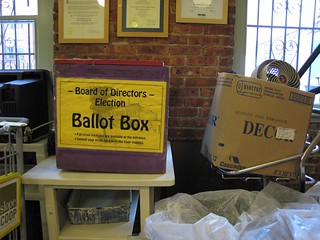
I’ve written before about how microwave ovens are a source of conflict among co-workers. When it comes to conflict between neighbours, trees appear to be a leading source of tension. Now a recent court case about a Toronto tree has clarified some of the legal issues relevant to trees in Ontario.
It would seem to be common sense, as well as a provision of the Forestry Act, that if a tree trunk is growing on the boundary between two lots, then the tree is the common property of the adjoining landowners. If a tree is indeed jointly owned, and one of the owners wants to remove it, the other owner must agree. However the Forestry Act does not specify where the tree’s trunk begins and ends. If the trunk of the tree emerges from the ground directly over the property line, then the tree is pretty clearly jointly owned. But matters are rarely so simple.
In the Toronto case the tree trunk met the ground on Katherine Hartley’s property, but its roots, canopy, and part of the trunk extended over the property boundary into her neighbours’ back yard. At some point (and for reasons that were not clear in the legal documents) Hartley came to the conclusion that the tree was unhealthy and decided to have it removed. Her neighbours, Hilary Cunningham and Stephen Scharper, would not consent to the tree’s removal, so Ms. Hartley sought the court to declare that she was the sole owner of the tree and so did not require her neighbours’ consent.
The judge dismissed her application and found that the tree was jointly owned. After hearing expert evidence from two arborists and a landscape architect, and reflecting on the dictionary definition of “trunk,” the judge wrote that the relevant section of the Forestry Act, “includes within the ambit of the meaning of a tree trunk growing on a boundary line the entire trunk from its point of growth away from its roots up to its top where it branches out to limbs and foliage. In any event, it is not only the arbitrary point at which the trunk emerges from the soil that governs.” Furthermore, since Ms. Hartley provided no evidence that the tree was unhealthy, her “wish to remove the tree falls short of a need to do so.” In a subsequent decision the judge awarded costs to Cunningham and Scharper on a “partial indemnity” basis – in other words, besides having to pay her own legal costs, Hartley was responsible for paying over $13,000 of her neighbours’ costs.
Is this a conflict that should have been mediated? There is no doubt that mediation would have been less expensive than litigation. And since Hartley, Cunningham and Sharper will presumably continue to live next to one another they would have benefited from mediation’s ability to preserve and even strengthen relationships. While I am a strong proponent of mediation, I also realize that it isn’t right for every case, and I do not have enough information to guess whether a mediation could have been successful in this particular case. However Justice Moore’s decision makes it clear that if a tree is jointly owned then its future has to be determined by both owners. His ruling should help neighbours in similar situations understand the legal landscape, so the speak, and assist them in coming to mutually agreeable decisions.

